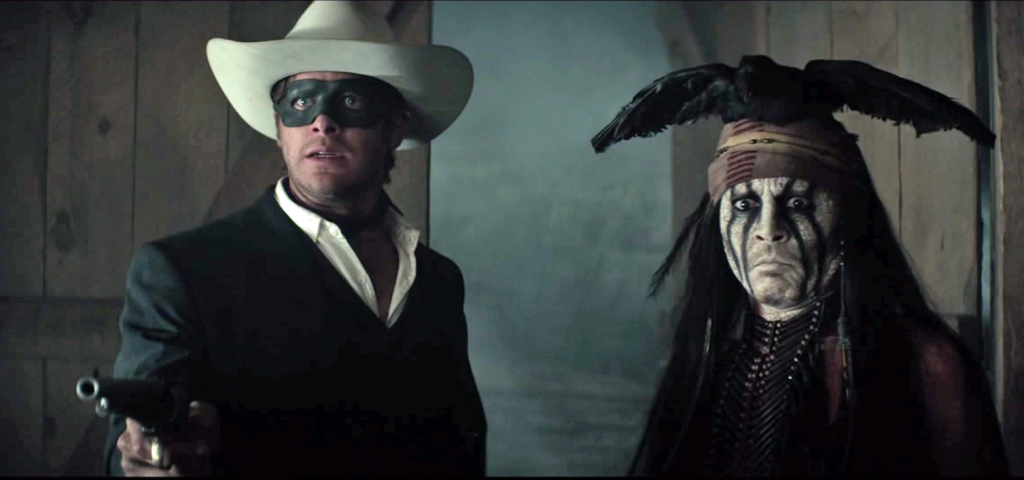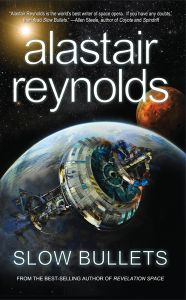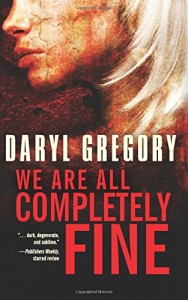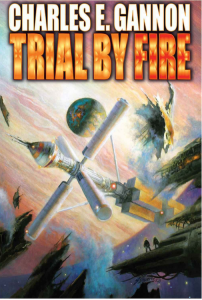
The good news is that Gannon has done his homework and produced a thoughtful and complex piece of space opera. The bad news is that he’s so proud of the work that went into it that he spends a fair chunk of the book telling us about it, rather than letting his characters just get on with it.
Trial by Fire is complex, well-thought-out space opera. Gannon second book in the Terran Republic series is a collision of deep games by lots of players, clashing more than one civilization against another. He’s also worked hard to provide character conflict with a messy love quadrangle and a host of viewpoint characters. It’s a big book, partly because he’s thrown in way too much exposition, but partly because it covers too much ground. Fans may like the latter, as it keeps them from having to wait for the next installment, and there will be a next installment, we can be sure of that, but some hard editing would have made this a better read without sacrificing the book’s ability to convey its message. At the core, it’s a classic sf action adventure on the theme of human exceptionalism, but it manages to create a synthesis of everything from Niven’s Ringworld to James P. Hogan’s Inherit the Stars.
Charles Gannon’s first book in his Terran Federation space opera series, Fire with Fire, came out last year to enough acclaim to garner it a Nebula Award nomination. It was a enjoyable and fast paced tale of first contact and political intrigue starring Caine Riordan, a man slightly our of time. Caine was a civilian military analyst and sometime journalist who happened to fall in love with the wrong gal at the wrong time. When he showed up at her apartment (on the moon, btw) to surprise her with flowers, military security mistook him for a spy sneaking around an operative with very secret information they wanted to keep that way. Suddenly, Caine is bagged, tagged, and stuck in a cold freeze for the next 12 years. When he wakes up, it’s a whole new ball game. Interstellar travel, human colonies, and alien politics have all sprouted up while he was resting. To add insult to injury, the gal he was wooing’s dad turns out to be the head of a super-secret intelligence organization, hence Caine’s sudden nap, who had defrosted him so that he could put him to work as an operative.
Cain goes from reviewing ruins on a newly-colonized world and uncovering the unsettling news that there were humans there thousands of years ago, to uncovering the move towards war that lie behind humanity’s rejection from the alien Accord under which we’re applying for entrance into the local galactic community.
And now he’s back in book two, and yes, there will be war.
The story opens with Caine being briefed by an Admiral on “the Pearl,” our starbase at Bernard’s star. After serving as a civilian operative of the shadowy IRIS agency, ge’s been dragooned into the military, jumped up to Commander, and is now being deactivated. All fast enough to make his head spin, but for which reasons will, more or less become clear. Along with him is Trevor Corcoran, former Navy SEAL, son of spymaster (deceased) Nolan Corcoran, and brother of Eleanor…who happens to be the gal Caine fell for before getting dropped into cold sleep. Fortunately, she was on the young side then, and they’re now more or less contemporaries. Trevor’s been jumped up to Captain, and like Caine, suddenly retired, all of which is prepositioning for what’s to come. Speaking of love interestes, if you haven’t read book one, there’s Opal Patrone, an Army Major who’d been in cryo far longer than Caine, but got drafted by IRIS on awakening and assigned to get close to our boy. As a result, we’ve got a complicated lover’s quadrangle. Opal loves, Caine, Caine loves Elena but due to a memory wipe isn’t supposed to know it, Elena loves Caine, and has a child by him besides, and Trevor love Opal, who, it turns out, is quite pregnant by Caine. Whew.
Caine and Trevor are sent post-haste back to Earth, but don’t quite make it before the alien Arat Kur shows up and wipes out the fleet at Bernard’s Star. The two may well be the only survivors, and that only because their ship was showing diplomatic identification codes, a mistake caused by their sudden retirement. The ship that nearly kills them, and gets shot up for its trouble, turns out to be carrying the Arat Kur’s actual diplomat, Darzhee Kut, another character we ran into in the first book. Caine and Trevor survive by first taking Darzhee prisoner, then surrendering to his fleet…and the book jumps forward to after the invasion of Earth.
Seems like that could have been interesting…but….nevermind.
Back on Earth, Trevor has been given back to us, but Caine is kept on as diplomatic liason and very much a prisoner. The Arat Kur have two major allies in this war they’ve chose to wage, the hyper agressive Hkh’Rkh, another galactic race, and Earth’s biggest corporation, CoDevCo, who don’t see this as an invasion at all, just an alliance forged without messy government intervention. The aliens have taken over the orbital high ground, but the only piece of Earth they’re sitting on is Indonesia, where CoDevCo’s orbital cargo launching mass driver, a rail gun on steroids, is located. They’ve imposed a global no-fly rule, enforced by orbital laser and kinetic weapons, and only reluctantly opened Indonesia to ships carrying grain, since “looters” tragically destroyed the food stores forcing the aliens to let thousands starve or a few ships in.
That’s the setup. Caine’s inside, everyone else is outside trying to figure out how to get in, and it’s all going according to plan, a plan laid down by Nolan Corcoran before he died.
Despite the work the author put into creating character conflict equal to the military and political conflicts, the characters don’t pull us in. Caine spends much of the book on the sidelines looking on and explaining humanity to the aliens, Opal and Elena race each other to go save Caine, who wouldn’t need saveing except that Nolan’s successor, Richard Downing, keeps throwing him back ito the fire, and Trevor just hopes that things work out between Caine and Elena so he can snap up Opal.
At 464 pages, Fire with Fire wasn’t thin, but at 656 pages Trial by Fire trumps it by a nearly a third, and getting through the first couple hundred pages, despite a fleet on fleet space battle where we take it on the chin against overwhelming alien superiority, is something of an uphill battle. Gannon’s done a terrific amount of work getting his facts right, from the logistical to the political, but instead of letting his characters show us the results, he’s determined to have them talk them to death before, or as, things are happening. Gannon knows his art of war, from Sun Tzu to Clausewitz and beyond, but while i”Amateurs talk about tactics, but professionals study logistics,” (1) he might leaven it with some of Hemming way’s advice;
“If you leave out important things or events that you know about, the story is strengthened…the test of any story is how very good the stuff that you, not your editors, omit.” (2)
That’s it. I blame the editor, actually, I really do. This book is good enough that some actual editing would have been worth the investment.
Now, you may be thinking that in this genre, exposition isn’t always a bad thing, and I agree. A large part of why I read science fiction is because good sf is driven by ideas, and from Robert Heinlein to Neal Stephenson, whether Morris the Explainer shows up as a sage professor explaining ballistics on the way to the moon, or a virtual librarian giving us back-story on the invention of writing and neuro-viruses by Sumerians, it’s actually what I came for. In Trial by Fire’s case, I expect that it’s in there to lend credibility to what might otherwise be dismissed as mil-spec porn. Not, as Bud Sparhawk once said to me, that that’s a bad thing, per se, but Gannon is clearly aiming higher.
Fire with Fire could easily have been broken up into two books, and in fact, it does so in the table of contents with Book One taking us from the opening slaughter of Earth’s fleet at Barnard’s Star to the invasion of Earth, and Book Two takes the fight back to the enemy both on the ground and between the stars. It’s a lot of ground to cover, and while fans will be no doubt grateful for not being left hanging, it’s a big read all at once.
It took a while for Trial by Fire to win me over, but eventually it did the trick. It’s a big book, full of good ideas and carefully thought out, but next time, could we have a little less talk, and a lot more action?
Links References
1) Possibly first said by General Omar Bradly, but it may go back further than that.
2) Ernest Hemingway (1990). “The Art of the Short Story”. In Benson, Jackson. New Critical Approaches to the Short Stories of Ernest Hemingway. Duke University Press. ISBN 978-0-8223-1067-9.
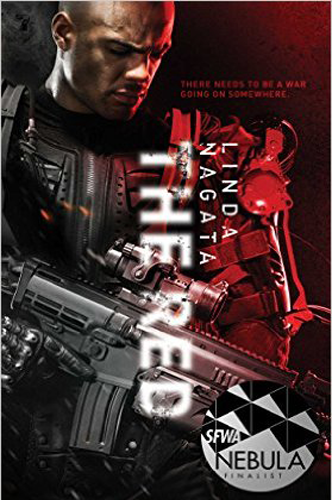 LT James Shelly claims he doesn’t much like being a soldier, that he was dragooned into the US forces stationed around the world keeping the peace, watched over by drones and angels back stateside weaving a picture of the scene from all the many threads of data. Shelly was a privileged kid in NYC that got caught up in an anti-war rally and made the mistake of posting videos of cops being cops, and a judge gave him the classic choice. James is a cynical as Haldeman’s William Mandella, the central character in The Forever War, also a conscript with attitude. Unlike Mandella though, Shelly’s kidding himself.
LT James Shelly claims he doesn’t much like being a soldier, that he was dragooned into the US forces stationed around the world keeping the peace, watched over by drones and angels back stateside weaving a picture of the scene from all the many threads of data. Shelly was a privileged kid in NYC that got caught up in an anti-war rally and made the mistake of posting videos of cops being cops, and a judge gave him the classic choice. James is a cynical as Haldeman’s William Mandella, the central character in The Forever War, also a conscript with attitude. Unlike Mandella though, Shelly’s kidding himself.